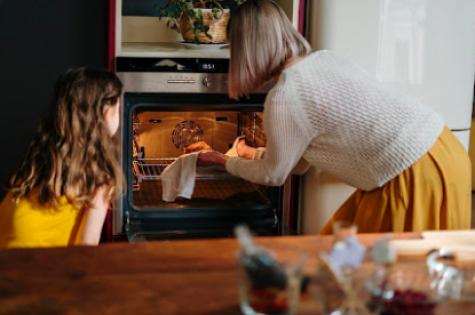As mums, we want our homes and families safe. Well, after baby-proofing the sharp edges and putting away all the adult medicine, it’s time to address electricity.
Electrical accidents are among the biggest home safety issues, right along with fires and physical injuries. Let’s take a look at the risks and how to handle them.
Know where problems happen
First off, you want to be aware of all the spots where electrical issues might occur. Most of them are obvious, but some are not so much. Here’s what you should watch out for:
-
Appliances near water. Never have an appliance or gadget near a water source. Faucet or pet bowl, doesn’t matter: move them further apart. Don’t let anyone use electrical devices with wet hands.
-
Unguarded outlets. Put protective coverings over the sockets, especially if you have young children. Kids love to explore and might stick their fingers or other objects into the outlet. They could get burned, shocked, or electrocuted.
-
Old wiring. Outdated electrical installations are a fire hazard. If your home is relatively old it could still have aluminum wiring. Aluminum is soft, brittle, and easily overheats. Every time you flip a switch or handle a plug, you risk a spark. Replace it with modern copper wires during your next house improvement project.
-
Outdated panels. Modern homes consume much more electricity than just 30 or 40 years ago. Old electric panels are too small and can’t accommodate the required number of circuits. Their fuses also can’t provide the necessary power levels. Older panels work at 60 amp, whereas modern homes consume 200 amp at the minimum.
-
Loose connections. Like old wiring, loose connections are a spark source. They often occur in outlets or circuit breakers, and easily grow into flares. You might have this issue if there’s blackening around your plugs and outlets, especially if it comes with a burning smell.
Light bulbs. To be fair, this comes down to how you handle them. If you place a hot bulb on something flammable, it’s a potential fire hazard. If you leave the switch on when replacing a light bulb, you’re at risk of electric shock. If you over-lamp, it’s a triple hazard - injury, fire, and electrical. Over-lamping means using a bulb of higher wattage than the light fixture can handle. It overheats the bulb, so it could shatter and cut someone. It could melt the insulation or spark.

Recruit expert help
Professional electricians can give you safety tips tailored to your specific home environment. Contact your preferred service provider and have them do a thorough inspection. Ask them to look at all the elements we listed above and more:
-
Wiring
-
Panels
-
Outlet
-
Cord management
-
Connections
-
Lighting fixtures
-
Central power supply
-
Overall capacity
-
Metering equipment
-
Phase power
-
Electrical decorations etc.
It’s best to hire a local expert. For example, if you live in the north of Sydney, look for a level 2 electrician in Northern Beaches. They’ll have experience with the grid in your area. You can get more accurate insight according to how old the homes are, what urban projects affected the electric installations in recent years, etc. If something needs replacing or upgrading, address it as soon as you’re able.
Make sure your cords are safe
Even if your home electrical system is overall alright, individual connections are often overlooked. Check your devices for damaged plugs, worn-out or distorted cables, and iffy switches. Extension cords are especially risky. They have to be used according to manufacturer instructions, but many people don’t know that.
Cords all have standard ratings and capacities. These tell you how much power can safely pass through. The cable rating must match the power demand of the appliance that’s plugged into it. If the device demands more than the cable can handle, there’s a risk of overheating and electrical fire.
When you set up extension cords, there should be only one to each outlet. Don’t bundle them together and don’t hide them under carpets or furniture. They have to stay uncovered so that they can properly cool off. Moreover, if people walk over a cord under a carpet, the insulation breaks down much sooner.
Finally, make sure everyone knows what to do in an emergency. Never extinguish electrical fires with water. Smother them in baking soda instead. Consider doing a first-aid course for shock and electrocution as a family. Have emergency contacts visibly posted next to electrical hubs in the home.
Written by Lana Hawkins







__small.png)








__small.png)










